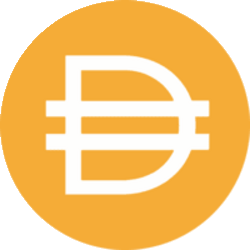Won-denominated stablecoins face significant risks due to depegging and lack of institutional trust, according to the Bank of Korea’s report. Private issuers may fail to maintain 1:1 pegs with the Korean won, echoing historical currency crises. The central bank urges banks to lead issuance for stability and public confidence.
-
Depegging vulnerability: Won stablecoins risk breaking their value peg, similar to the Terra/Luna collapse that wiped out investor funds overnight.
-
Historical parallels: The Bank of Korea compares potential failures to 19th-century U.S. free banking and Korea’s Dangbaekjeon crisis.
-
Institutional trust deficit: Private issuers lack the safeguards needed, with even major stablecoins like USDC dipping to $0.88 during the Silicon Valley Bank turmoil.
Won-denominated stablecoins spark Bank of Korea warnings on depegging risks and trust issues. Explore how banks should lead issuance for secure crypto innovation. Stay informed on Korea’s stablecoin future—read now!
What Are the Risks of Won-Denominated Stablecoins?
Won-denominated stablecoins are digital assets designed to maintain a stable value pegged to the Korean won, but they carry substantial risks highlighted by the Bank of Korea. The central bank’s recent report emphasizes depegging dangers, where these coins could lose their 1:1 value promise, leading to investor losses. Drawing from past failures like the Terra/Luna algorithm breakdown, the BOK stresses that trust, not just technology, underpins currency stability, urging a cautious approach to private issuance.
Why Does the Bank of Korea Prefer Bank-Led Stablecoin Issuance?
The Bank of Korea advocates for traditional banks to spearhead won-denominated stablecoin issuance to ensure institutional trust and mitigate risks. According to the BOK’s report, private issuers often lack the “publicness” required to handle reserve assets securely, potentially leading to value declines from poor investments. This bank-first strategy aligns with Project Hangang, the central bank’s pilot for deposit tokens on its blockchain, promoting coordinated oversight. In June, BOK Deputy Governor Ryoo Sang-dai noted that starting with banks would allow gradual expansion to non-banks, safeguarding Korea’s financial system amid rising stablecoin trading volumes.
Historical precedents underscore these concerns. The report references America’s 19th-century free-banking era, where unchecked private currencies led to widespread failures, and Korea’s own Dangbaekjeon crisis under King Gojong, which eroded public confidence in paper money. For won stablecoins, the BOK warns that without robust mechanisms, a depeg could trigger similar chaos, especially given the limited circulation of non-dollar variants. Even euro-pegged stablecoins, backed by a major reserve currency, are deemed “particularly vulnerable” due to these trust gaps.
The central bank clarifies its stance does not oppose innovation outright. “We do not seek to block innovation; rather, it seeks safe and sustainable innovation,” the report states. It challenges the notion that blockchain alone guarantees stability, asserting, “Currency operates not on technology, but on trust.” This perspective is reinforced by the launch of KRW1 in September by digital asset custodian BDACS in partnership with Woori Bank. Built on the Avalanche blockchain—recognized by Korea’s Internet & Security Agency for reliability—KRW1 represents a regulated, bank-backed model that the BOK views as a safer path forward.
Broader policy efforts support this direction. In September, Korea’s ruling Democratic Party established a Digital Asset Task Force, committing to stablecoin legislation by year’s end to protect monetary sovereignty. This comes amid surging crypto trading and outbound flows via stablecoins, highlighting the need for inter-agency coordination.
Frequently Asked Questions
What Is Depegging Risk for Won-Denominated Stablecoins?
Depegging risk occurs when a stablecoin fails to hold its promised 1:1 value with the Korean won, often due to inadequate reserves or market shocks. The Bank of Korea’s report cites the Terra/Luna crash, where an algorithm collapsed in days, devastating investors. For won variants, this vulnerability is heightened by private issuers’ limited safeguards, potentially causing rapid value erosion and financial instability in 40-50 words of direct explanation.
How Will South Korea’s Stablecoin Policies Impact Crypto Innovation?
South Korea’s stablecoin policies, guided by the Bank of Korea, aim to foster secure innovation by prioritizing bank-led issuance while addressing trust issues in won-denominated stablecoins. This approach balances growth with protection, encouraging regulated projects like KRW1 and preventing crises through oversight, ensuring the crypto ecosystem thrives without compromising monetary stability—perfect for voice queries on future developments.
Key Takeaways
- Trust Over Technology: The Bank of Korea emphasizes that stablecoins rely on institutional trust, not just blockchain, to avoid depegging like in Terra/Luna.
- Bank-Led Issuance: Private issuers face high barriers; banks are preferred for their publicness and ability to manage reserves securely.
- Policy Momentum: With Project Hangang and upcoming legislation, Korea is positioning for sustainable stablecoin growth while protecting sovereignty.
Conclusion
The Bank of Korea’s report on won-denominated stablecoins underscores critical depegging risks and the need for bank-led issuance to build lasting trust. By learning from historical currency failures and advancing initiatives like Project Hangang, Korea is charting a prudent path for crypto integration. As stablecoin adoption grows, stakeholders should monitor policy updates from the BOK and Democratic Party’s task force—preparing for a more secure digital asset landscape ahead.
